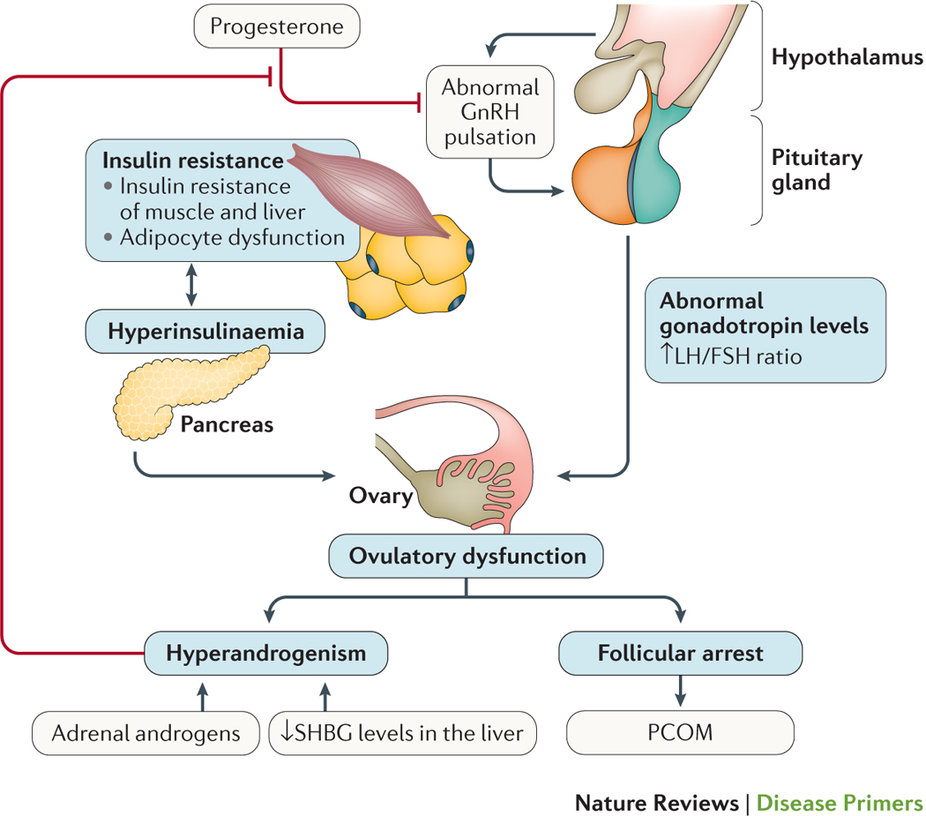多嚢胞性卵巣症候群
Polycystic ovary syndrome
2016年8月11日 Nature Reviews Disease Primers Article number: 16057 (2016) doi: 10.1038/nrdp.2016.57

多嚢胞性卵巣症候群(PCOS)は世界の生殖可能年齢の女性の5~20%が罹患している。PCOSの特徴は高アンドロゲン血症、排卵障害および多嚢胞性卵巣形態(PCOM)であり、卵巣による過剰なアンドロゲン産生がこの疾患の主徴になっている。インスリン耐性および代償性高インスリン血症を特徴とする代謝異常が罹患者の大多数で起きる。PCOSによって、2型糖尿病、妊娠糖尿病とその他の妊娠関連合併症、静脈血栓塞栓症、脳血管イベント、心血管イベントおよび子宮内膜がんのリスクが上昇する。PCOSの診断は、除外診断をした上で、主として高アンドロゲン血症、排卵障害およびPCOMの有無によって行われる。患者の病状と希望に応じて治療が個別化されており、過体重の予防と管理、アンドロゲンの抑制および/または阻害、子宮内膜の保護、生殖治療および心理的特性の検出と治療を目的として、生活習慣の変化による代謝異常の改善や薬物治療に加えて、外科手術が行われる場合もある。このPrimerでは、PCOSの疫学、発症機構と病態生理学、診断、スクリーニング法と予防法、管理および今後の研究の方向性に関する現在の知見について要約する。
PrimeView
多嚢胞性卵巣症候群(PCOS)は生殖可能年齢の女性の5~20%が罹患している。このPrimeViewでは、高アンドロゲン血症、排卵異常および多嚢胞性卵巣形態のようなPCOSの臨床的特徴の原因となり、それらを持続させる、複雑な病因ならびに複数の発症機構による相互作用に焦点を合わせる。
本Primerの図解サマリー

